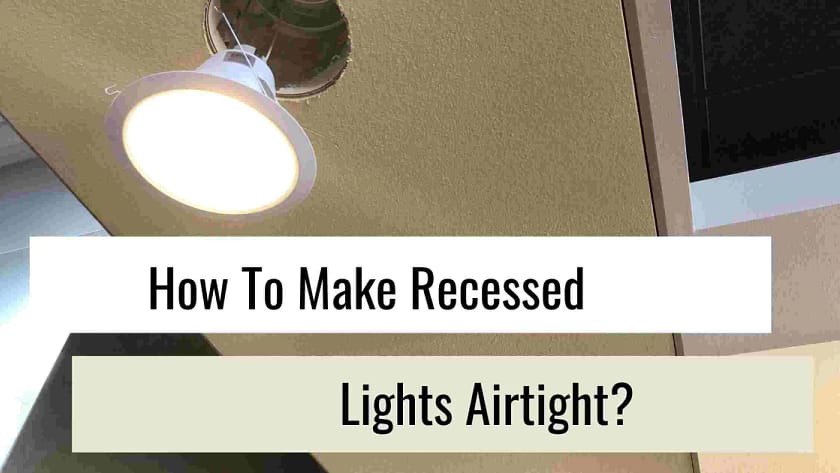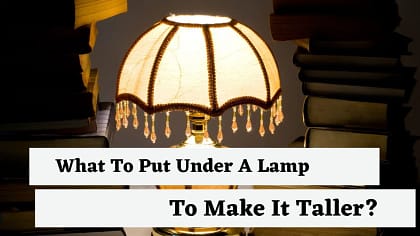In many homes in America, the leading cause of energy loss occurs through the poor installation of recessed lighting. In fact, according to a study, a residential home can lose up to 30-40% of their heating loads and 10-15% of the 63 cooling loads with canister lights alone.
Installing recessed lighting can hide imperfections in your ceiling and for homes with low ceilings. A commonplace where most of the energy is lost is up in the attic. Therefore, without airtight recessed lighting, your bill will continue to be on the rise.
Airtight canisters prevent heat or cool air from escaping; this makes for a comfortable home and helps save money. This extra step is a lifesaver for people on a budget and what to experience all the benefits of recessed lights.
The good news is there are many fixes to help save on recessed lighting these include: swapping out all your old outdated fixtures for IC-rated ones or adding recessed caps.
What is an airtight recessed light?
For the past ten years, many manufacturers have invested in creating “Airtight” recessed lights. These fixtures have passed the strict 1992 code that eliminates moisture and excess air from entering the ceiling’s cavity.
Some have a trim package that has a combination of gasket housing and enclosure to isolate the light from its living assembly.
A truly effective seal is canisters with a pre-installed gasket between the fixture and the inside of the ceiling. Also, there are trims available that form a tight seal between the lights and the ceiling.
Investing In IC-Rated Recessed Cans
There are two types of recessed lights: IC rated and Non-IC rated. IC-rated canisters allow the fixtures to be in direct contact with insulations. Compared to non-IC-rated, which need 3 inches away from insulation over the ceiling.
You will find these non-IC-rated cans in many of the older homes. Both fixtures usually have a perforated canister to dissipate heat from lightbulbs, and this is where most of the air leakages occur.
During the winter, air enters through the base of the cans, which already have a high temperature causing lower density; increasing the temp. One immediate fix is to opt for LEDs that produce a lot less heat than traditional light bulbs.
Although LEDs are a bit more expensive than, say, incandescent bulbs. They are long-lasting (up to 50,000 hours) and cost less to run. Furthermore, IC-rated canisters can have insulation close by adding mineral wool next to the fixture, which creates additional protection.
A drywall Box/ Cover For Recessed Lighting
Light caps or dry box creates an airtight seal around your lights. They are a common structure homeowners used to protect their fixtures from insulation and avoid fires. According to the Department of Energy, recessed lights account for 50% of the total thermal losses of a ceiling.
It also stops heat from moving into the roof cavity and is spacious so the LED light can dissipate heat safely. Installing recessed covers is easy to do. However, if you don’t enjoy messing with electricity or don’t know what transformer your fixture has then, consult a professional.
Moreover, consider installing IC-rated lights. Despite LED’s low heat outrun, they are more sensitive to high temperatures and can fail easily.
Below is a YouTube video that can help you. If you are looking for an airtight cover, then I recommend using the PROCURU. This product is easy to install and has a simple trim that goes with any home design.
Are Canless recessed lights airtight?
No, not all canless recessed lights are airtight. But you can tell by looking for the label on the package or ensuring that the product title has the word “airtight”. The Cree retrofit canless is an ideal option because of its high CFL and good efficacy. Plus, they are affordable compared to other brands.
How these retrofit canless fixtures work is they dispel the heat from the bulbs into the cans rather than the ceiling. They aren’t any safety hazards as most LEDs bulbs will limit the current as they get too hot and dim.
Cheaper fixtures will overheat and fail, rather than start a fire. Air-tight pot lights are not truly “airtight” but they can decrease the amount of air leakage from the fixtures. For added protection, retrofit lights are IC- rated so you can add some insulation near the fixture.
To Recap
To make recessed lighting airtight is to install covers or invest in IC-rated fixtures that can come in close contact with insulation. You can also purchase the Cree retrofit, which is affordable and dissipates heat safely.





